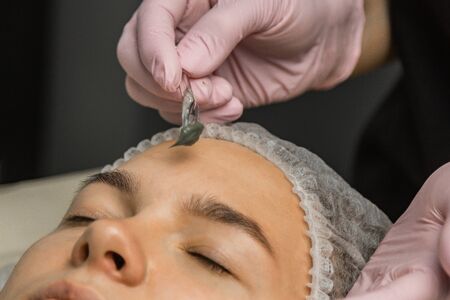Introduction: Shifting Attitudes towards Aesthetic Treatments in the UK
Over the past decade, perceptions of aesthetic treatments in the UK have undergone a significant transformation. Traditionally, British society has been somewhat reserved when it comes to cosmetic enhancements, with many associating such procedures with celebrity culture or excessive vanity. However, recent years have seen a marked shift, as non-surgical skin treatments become increasingly mainstream and socially acceptable across a wide demographic. This evolution has been driven by greater awareness of treatment safety, advances in technology, and changing ideals of self-care and confidence. Within this broader movement, microneedling stands out as one of the most popular non-surgical options, offering visible results with minimal downtime. The growing acceptance of these procedures reflects a cultural move towards embracing subtle improvements and prioritising natural-looking outcomes—factors that resonate deeply with British values around authenticity and understated elegance. As we explore the rise of microneedling and other minimally invasive techniques, it is clear that attitudes in the UK are shifting from scepticism to enthusiasm for science-backed solutions that support healthy, radiant skin without the need for surgery.
2. A Brief History of Non-Surgical Skin Treatments
The landscape of non-surgical skin treatments in the UK has undergone significant transformation over the decades, evolving from time-honoured remedies to cutting-edge technological interventions. Traditionally, Britons relied on natural ingredients such as rosewater, witch hazel, and oatmeal masks—remedies passed down through generations for soothing and enhancing the complexion. In the post-war era, skincare routines were influenced by advances in dermatology and the rise of commercial products, with cold creams, lotions, and exfoliating scrubs gaining popularity among the masses.
Key Milestones in Skin Rejuvenation Practices
| Era | Popular Approaches | Technological Advancements |
|---|---|---|
| Pre-1960s | Home remedies, herbal infusions, cold creams | Limited to basic formulations and manual exfoliation |
| 1970s–1980s | Chemical exfoliants, facial steaming, toners | Introduction of alpha hydroxy acids (AHAs), more refined moisturisers |
| 1990s–2000s | Microdermabrasion, light chemical peels | Professional-grade devices and stronger active ingredients enter clinics and salons |
| 2010s–Present | Microneedling, laser resurfacing, injectables (non-surgical) | Dermarollers, automated microneedling pens, combination therapies integrating advanced technologies |
The Shift Towards Evidence-Based Solutions
This evolution is marked not only by changing consumer preferences but also by a growing demand for scientifically validated outcomes. The UK’s regulatory standards for cosmetic procedures have led to widespread adoption of clinically backed methods, with practitioners favouring treatments that offer tangible results without invasive surgery. Among these innovations, microneedling stands out as a prime example—merging traditional concepts of skin renewal with contemporary medical technology.

3. The Science and Appeal of Microneedling
Microneedling has rapidly become one of the most sought-after non-surgical skin treatments in the UK, thanks to its unique blend of scientific credibility and visible results. At its core, microneedling employs a device equipped with fine needles to create micro-injuries on the skin’s surface, which in turn stimulates the body’s natural healing processes. This controlled trauma triggers collagen and elastin production—two essential components for maintaining youthful, resilient skin. As a result, British clients are increasingly drawn to microneedling for addressing concerns such as fine lines, acne scars, enlarged pores, and overall skin texture.
The Mechanism Behind Microneedling
Unlike more invasive procedures or topical solutions with questionable efficacy, microneedling works by harnessing the body’s innate regenerative abilities. The treatment is typically performed using either a dermaroller or an automated pen-like device, both of which allow for precise depth and intensity tailored to individual skin types and concerns. By promoting cellular turnover without removing layers of skin or requiring significant downtime, microneedling fits seamlessly into the fast-paced British lifestyle.
Benefits That Resonate with UK Clients
Microneedling’s appeal in the UK stems from its versatility and minimal invasiveness. It offers a practical solution for those looking to achieve noticeable improvements without committing to surgical interventions or lengthy recovery periods. The treatment can be customised for various skin conditions and is suitable for most skin tones—a key consideration in the diverse British population. Additionally, it supports other skincare practices common in the UK, such as professional-grade serums or vitamin-infused treatments that are often used in tandem with microneedling for enhanced results.
Why British Consumers Choose Microneedling
The growing interest in microneedling among British clientele is shaped by cultural preferences for subtlety and discretion. Many individuals prefer treatments that deliver gradual yet significant improvements, aligning with the understated elegance often favoured in British aesthetics. Furthermore, the procedure’s safety profile and track record of efficacy contribute to its rising popularity across leading clinics in London, Manchester, Edinburgh, and beyond. In summary, microneedling represents a compelling intersection of science-backed innovation and practical appeal—an evolution well-matched to the expectations of today’s discerning UK consumer.
4. Consumer Preferences and Cultural Influences in the UK Market
The evolution of non-surgical skin treatments in the UK, particularly microneedling, is deeply intertwined with local cultural values and consumer expectations. British society, known for its pragmatic approach to beauty and wellness, often prioritises subtlety, natural results, and minimal downtime. This has directly influenced the popularity of procedures like microneedling, which promises rejuvenation without dramatic alterations or extended recovery periods.
Changing Attitudes Towards Aesthetics
Historically, British consumers have exhibited a degree of scepticism towards invasive cosmetic interventions. The preference has been for understated enhancements that align with the national disposition towards modesty. In recent years, however, there has been a noticeable shift—driven by increased exposure to global beauty trends, social media influence, and greater accessibility of advanced treatments. This has led to growing acceptance of non-surgical options as part of routine self-care rather than luxury indulgence.
Key Consumer Expectations
The following table highlights some core consumer preferences in the UK market compared to global trends:
| Preference | UK Market | Global Trend |
|---|---|---|
| Downtime | Minimal; treatments should fit busy lifestyles | Varies; longer recovery accepted in some regions |
| Results | Natural-looking, gradual improvements | Dramatic changes often sought after |
| Safety | High emphasis on regulation and practitioner credentials | Increasing focus worldwide, but more pronounced in UK |
| Cultural Acceptance | Non-surgical options widely accepted as self-care | Acceptance varies; stigma remains in some areas |
Cultural Trends Shaping Adoption of Microneedling
The rise of “tweakments” culture—a term popularised in the British press—reflects a growing appetite for subtle interventions like microneedling. Media coverage, celebrity endorsements, and peer recommendations play a significant role in normalising these procedures among various demographics. Furthermore, the NHS’s stance on cosmetic interventions (typically only provided for medical necessity) reinforces a private sector landscape where informed choice and quality assurance are paramount.
Social Dynamics and Gender Perspectives
Younger generations are particularly receptive to microneedling due to its perceived safety profile and visible results on common concerns such as acne scarring or fine lines. There is also a notable increase in male clientele seeking non-surgical solutions, reflecting shifting gender norms around grooming and personal care.
In summary, the adoption of microneedling and related treatments in the UK is shaped by a combination of cultural sensibilities, rising health literacy, and evolving beauty standards—ensuring these solutions remain at the forefront of non-surgical skincare trends.
5. Regulatory Landscape and Professional Standards
The evolution of non-surgical skin treatments in the UK, particularly microneedling, has necessitated a robust regulatory landscape to ensure both practitioner competence and consumer safety. The sector is primarily overseen by the Care Quality Commission (CQC) for certain medical-grade procedures, while local authorities may regulate beauty-based practices. However, as the popularity of microneedling has surged, so too has the emphasis on stringent compliance with national standards and guidelines.
Microneedling devices are classified according to their intended use and needle length; those exceeding 1.5mm or used for medical indications fall under stricter regulatory scrutiny and must adhere to the Medical Devices Regulations 2002 and recent updates aligning with EU MDR. Practitioners offering such treatments are expected to demonstrate adequate qualifications, ranging from NVQ Level 3 (or equivalent) for beauty therapists, up to registered healthcare professionals for advanced procedures.
Accreditation bodies such as the Joint Council for Cosmetic Practitioners (JCCP) and the British Association of Beauty Therapy & Cosmetology (BABTAC) play a pivotal role in setting benchmarks for training, continuous professional development, and ethical practice. Membership with these organisations assures clients that practitioners uphold recognised standards in infection control, client assessment, and aftercare.
Additionally, insurance is a non-negotiable requirement in the UK aesthetics industry. Comprehensive public liability and treatment risk coverage are mandated not only to protect practitioners but also to safeguard client interests should adverse events occur.
Ultimately, as microneedling continues to gain traction across Britain, maintaining high professional standards—through regulatory compliance, accredited training, and ethical conduct—remains essential for fostering trust and ensuring optimal outcomes for all clients.
6. Future Trends: What Lies Ahead for Non-Surgical Skin Treatments
As the landscape of non-surgical skin treatments continues to evolve in the UK, several future trends are poised to redefine British aesthetics. Technological advancements remain at the forefront, with innovations such as AI-driven diagnostics, personalised treatment protocols, and more sophisticated microneedling devices set to enhance both safety and outcomes. The integration of smart technologies—such as app-based consultations and progress tracking—will likely become standard practice in clinics across London, Manchester, and other major cities.
Technological Innovation: Beyond Microneedling
Emerging technologies are expected to complement traditional microneedling, including hybrid devices that combine radiofrequency energy, laser modalities, or even targeted drug delivery systems. These advances promise reduced downtime and more bespoke results tailored to individual skin types, reflecting a shift towards hyper-personalisation in British skincare.
Shifting Consumer Behaviour
The British public is becoming increasingly discerning about aesthetic treatments, seeking not only effective results but also minimal invasiveness and transparency regarding ingredient sourcing and treatment methodologies. Demand for ‘tweakments’—subtle enhancements rather than dramatic changes—is set to increase, influenced by social media trends and the desire for natural-looking outcomes. Additionally, consumers are more informed than ever before, leveraging online resources and peer reviews to make educated decisions about their skincare journeys.
Sustainability in British Aesthetics
Environmental consciousness is shaping the future of non-surgical skin treatments in the UK. Clinics are adopting greener practices, from reducing single-use plastics to opting for cruelty-free serums used during microneedling sessions. The push towards sustainability extends to packaging, supply chains, and waste management, aligning with broader societal values prevalent across Britain. As sustainability becomes a non-negotiable expectation among clients, brands that champion ethical practices will likely stand out in an increasingly competitive market.
The Road Ahead: Integrating Technology and Ethics
Looking forward, the convergence of cutting-edge technology with ethical considerations will define the next chapter of non-surgical skin treatments in the UK. Practitioners who embrace innovation while upholding transparency and environmental stewardship are best positioned to meet evolving consumer demands. As microneedling and similar treatments continue their ascent, their role within holistic wellness routines will further cement their place in modern British culture.


